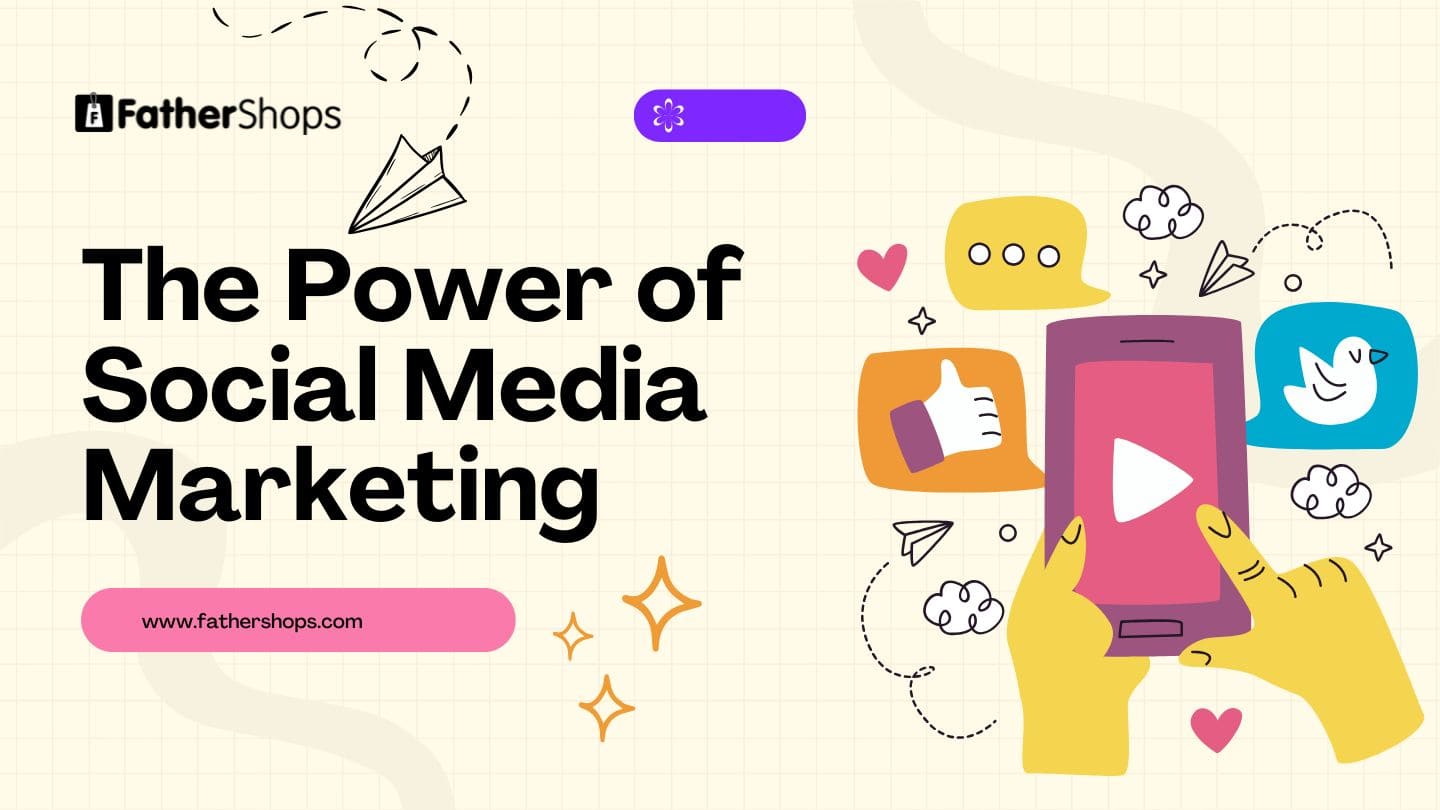Table Of Content
In the dynamic landscape of digital marketing, performance marketing has emerged as a decisive and results-oriented approach for businesses seeking to maximise their online presence. This beginner’s guide provides a complete overview of performance marketing in Australia, its components, benefits, measurement metrics, common types, and essential tips for success.
Is Affiliate Marketing the Same as Performance Marketing?
While often used similarly affiliate marketing is a subset of performance marketing. Performance marketing contains a broader scope of strategies focused on measurable results, while affiliate marketing specifically involves partnerships between merchants and affiliates to drive sales.
While affiliate marketing and performance marketing share some similarities, they are not the same; instead, affiliate marketing is a subset of performance marketing.
Performance Marketing:
Performance marketing is a comprehensive term that refers to online marketing and advertising programs in which advertisers (brands or businesses) pay marketing companies (publishers or affiliates) when a specific action is completed. This action could be a sale, a lead, a click, or another measurable metric. The key aspect of performance marketingis the emphasis on measurable and trackable results. It encompasses variousonline marketing channels and strategies, including paid advertising, search engine marketing (SEM), social media advertising, and more.
Affiliate Marketing:
Affiliate marketing, on the other hand, is a specific type of performance marketing. In affiliate marketing ,advertisers (merchants or businesses) partner with affiliates (publishers or individuals) who promote the advertiser’s products or services on their platforms (websites, blogs, social media, etc.). Affiliates earn a commission for each sale, lead, or action generated through their referral. The relationship is performance-based, with affiliates compensated based on the agreed-upon performance metrics.
In essence, affiliate marketing operates under the broader umbrella of performance marketing. While performance marketing encompasses a wide range of online marketing activities, affiliate marketing specifically involves partnerships between advertisers and affiliates, where compensation is tied to measurable outcomes. Both models emphasize the importance of quantifiable results and ROI, making them practical strategies for businesses looking to optimize their marketing efforts.
How Does Performance Marketing Work?
Performance marketingis a comprehensive approach to online marketing where advertisers pay marketing companies or publishers based on measurable results, such as clicks, leads, sales, or other predefined actions. The critical principle of performance marketing is that payment is tied directly to the performance of the marketing campaign. Here’s an overview of how performance marketing typically works:
Set Clear Objectives:
Advertisers begin by defining specific, measurable objectives for their marketing campaign. These objectives include generating leads, increasing website traffic, driving sales, or achieving other desired outcomes.
Choose Measurable Metrics:
Performance marketing relies on measurable metrics to determine the success of a campaign. Advertisers and marketers choose key performance indicators (KPIs) that align with their goals. Standard metrics include Cost Per Click (CPC), Cost Per Acquisition (CPA), Conversion Rate, and Return on Investment (ROI).
Select Performance Marketing Channels:
Performance marketing utilizes various online channels, including paid advertising, search engine marketing (SEM), social media advertising, affiliate marketing, email marketing, and more. The choice of channels depends on the target audience, campaign goals, and budget considerations.
Create Targeted Campaigns:
Advertisers design targeted and personalized campaigns to reach their specific audience. This may involve creating compelling ad creatives, optimizing landing pages, and employing audience targeting strategies to ensure the right message reaches the right people.
Implement Tracking and Analytics:
Tracking mechanisms and analytics tools are essential in performance marketing. Advertisers use tracking pixels, cookies, and analytics platforms to monitor user interactions, track conversions, and collect data on campaign performance.
Payment Based on Performance:
Unlike traditional advertising models, where payment is often upfront or based on impressions, performance marketing involves paying for actual results. Advertisers pay marketing companies or publishers when specific actions occur, such as clicks, leads, or sales. This ensures a direct correlation between marketing spend and tangible outcomes.
Optimize Campaigns:
Continuous monitoring and optimization are critical in performance marketing. Marketers analyze data and performance metrics to identify what is working and what needs improvement. Adjustments are made to optimize campaigns in real time, ensuring the best possible return on investment.
Scale Based on Success:
As campaigns prove successful, advertisers have the opportunity to scale their efforts. This could involve increasing budget allocations, expanding to additional marketing channels, or targeting new audience segments.
In summary, performance marketing is a dynamic and results-driven approach that aligns marketing efforts with measurable outcomes. Advertisers have the flexibility to adapt campaigns in real-time, optimizing their strategies based on data and performance metrics to achieve the best results for their objectives.
What are the Benefits of Performance Marketing?
Certainly! The benefits of performance marketing extend beyond just these three points, but they are indeed vital advantages that make this approach highly attractive for advertisers. Here’s a more comprehensive list of benefits:
Measurable Results:
Performance marketing provides precise and measurable results, allowing advertisers to track the success of their campaigns in real time. This transparency enables data-driven decision-making and facilitates a clear understanding of the return on investment (ROI).
Cost Efficiency:
Advertisers pay for actual results, such as clicks, leads, or conversions, rather than paying for ad space or impressions. This pay-for-performance model enhances cost efficiency, as marketing budgets are directly tied to measurable outcomes, ensuring that resources are allocated to strategies that deliver tangible results.
Wide Reach:
Collaboration with affiliates, influencers, or marketing partners allows advertisers to extend their marketing reach to diverse and often untapped audiences. This can be especially beneficial for reaching niche markets or demographics that may be challenging to target through traditional marketing channels.
Targeted Advertising:
Performance marketing enables advertisers to target their desired audience precisely based on demographics, interests, behaviour, and other relevant factors. This level of targeting ensures that marketing messages are delivered to the most relevant and receptive audience segments.
Flexibility and Adaptability:
Performance marketing campaigns can be easily adjusted and optimized in real time. Advertisers have the flexibility to refine strategies, update ad creatives, or modify targeting parameters based on the performance data gathered during the campaign.
Enhanced Data Insights:
The data generated through performance marketing campaigns provide valuable insights into consumer behaviour, preferences, and engagement patterns. This data can be used not only to optimize current campaigns but also to inform future marketing strategies and decision-making.
Scalability:
Successful performance marketing campaigns can be scaled up to reach larger audiences or expand into new markets. Advertisers can allocate additional resources to strategies that are proven to deliver positive results, driving further growth and impact.
Improved Return on Investment (ROI):
The combination of measurable results, cost efficiency, and targeted advertising contributes to an overall improved return on investment. Advertisers can allocate their budgets strategically to activities that generate the most value for their business.
Global Reach:
Performance marketing allows businesses to extend their reach globally. Through digital channels and affiliate partnerships, advertisers can connect with audiences around the world, expanding their market presence beyond geographical boundaries.
Quick Implementation:
Performance marketing campaigns can be launched relatively quickly compared to traditional marketing methods. This agility allows advertisers to respond rapidly to market changes, trends, or opportunities.
In summary, performance marketing offers a range of benefits that align with the dynamic nature of the digital landscape, providing advertisers with a cost-effective, measurable, and flexible approach to achieving their marketing objectives.
How Do You Measure Performance Marketing?
Indeed, performance marketing effectiveness is measured through various models that align with specific campaign goals and desired outcomes. Here are some standard performance metrics and models used in performance marketing:
Pay Per Sale (PPS) or Cost Per Acquisition (CPA):
- Definition:
Advertisers pay a fee for each completed sale or acquisition generated through the marketing campaign.
- Use Case:
Suitable for e-commerce businesses or companies focused on direct conversions.
Pay Per Lead (PPL):
- Definition:
Advertisers pay for each qualified lead generated through the marketing campaign.
- Use Case:
Effective for businesses that prioritize lead generation and require potential customer information for follow-up.
Pay Per Click (PPC):
- Definition:
Advertisers pay a fee each time a user clicks on the ad. Commonly associated with search engine marketing and display advertising.
- Use Case:
Widely used for driving traffic to websites and measuring the immediate interest in a product or service.
Pay Per X (PPX):
- Definition:
Customized payment models where advertisers define specific actions (X) for which they are willing to pay. This could include downloads, video views, or other user interactions.
- Use Case:
Flexibility to align payment with specific campaign objectives beyond sales or leads.
Lifetime Value (LTV):
- Definition:
Assessment of the long-term value of a customer over the entire duration of their relationship with the business.
- Use Case:
Provides insights into customer retention, loyalty, and the overall profitability of acquiring and maintaining a customer.
Click-Through Rate (CTR):
- Definition:
The percentage of users who click on an ad compared to the total number of users who view the ad. It is calculated as (Clicks / Impressions) x 100.
- Use Case:
Measures the effectiveness of ad creatives and the relevance of the message to the target audience.
Conversion Rate:
- Definition:
The percentage of users who take a desired action (e.g., make a purchase or fill out a form) compared to the total number of users who interacted with the ad or landing page.
- Use Case:
Reflects the efficiency of the campaign in converting users into customers or leads.
Return on Investment (ROI):
- Definition:
The ratio of net profit to the cost of the marketing campaign, expressed as a percentage. Calculated as [(Revenue – Cost) / Cost] x 100.
- Use Case:
Provides a comprehensive view of the campaign’s financial performance and overall profitability.
Customer Acquisition Cost (CAC):
- Definition:
The cost incurred by a business to acquire a new customer and calculated as Total Marketing Spend / Number of New Customers Acquired.
- Use Case:
Helps assess the efficiency of customer acquisition strategies and budget allocation.
Attribution Models:
- Definition:
Various models (e.g., first-touch, last-touch, multi-touch) are used to attribute value to different touchpoints along the customer journey.
- Use Case:
Provides insights into how different marketing channels contribute to conversions and assists in optimizing the marketing mix.
These metrics and models collectively provide advertisers with a comprehensive understanding of the performance and effectiveness of their marketing campaigns, enabling data-driven decision-making and continuous optimization.
Top 10 Performance Marketing Channels
Indeed, there are various channels of performance marketing strategies, each with its unique characteristics and advantages. Here are some of the most common Marketing channels:
1. Affiliate Marketing:
- Description:
Affiliate marketing is a type of performance marketing where advertisers pay a commission to affiliates for driving traffic or sales to their website. In other words, affiliate marketing is a way for businesses to promote their products or services by partnering with third-party publishers (affiliates) who promote the business to their audience. Affiliates are paid a commission for each sale or web traffic generated through their unique affiliate link.
- Advantages:
Cost-effective, pay-for-performance model, broad reach through diverse affiliates.
2. Native Advertising:
- Description:
Advertisements that seamlessly blend with the format and style of the platform where they appear. They match the look and feel of the editorial content.
Native advertising is a type of paid advertising that appears in the style and format of the content near the advertisement’s placement. It is a form of contextual and information-rich sponsored content that blends into the platform on which it appears.
Native ads often feature as recommended content on websites, appearing below or beside the article you just read. They also appear as “in feed” ads, as part of your news feed on social networks, such as Facebook or Twitter.
Native ads are designed to be less intrusive than traditional banner ads and are intended to provide a more seamless user experience. They are meant to mirror the appearance of regular content on an app or website and thus not appear as an ad at first glance
- Advantages:
Non-disruptive, higher engagement, and perceived as less intrusive by users.
3. Sponsored Content:
- Description:
Advertisers pay for the creation and promotion of content on platforms like blogs, social media, or other digital channels.
- Advantages:
Builds brand credibility, leverages influencers, and provides valuable and shareable content.
4. Social Media Marketing:
Social media marketing is the one of
performance marketing chennals
the approach of using social media platforms and tools to promote a business and connect with existing and potential customers. It is a digital marketing strategy that allows businesses to reach a large audience on the platforms where they already spend their time online.
Social media marketing activities can include:
- Content planning and creation: Creating suitable types of content for each platform to connect with the audience there.
- Content scheduling and publishing: Getting your content onto the proper platforms at the right time.
- Social media analytics: Using analytics tools to track how content performs, report on progress towards social media goals, and plan ways to improve overall response.
- Social listening: Using social tools to keep a virtual ear to the ground, learning what’s being said about your brand and your industry.
Social media marketing can help businesses build relationships with their audience, create brand loyalty, and drive traffic to their website.
- Description:
Promotion of products or services on social media platforms through organic posts or paid advertising.
- Advantages:
Targeted advertising, high audience engagement, real-time interaction with customers.
5. Paid Search Marketing (Pay-Per-Click – PPC):
- Description:
Advertisers bid on keywords, and their ads appear at the top of search engine results when users search for those keywords. Advertisers pay for each click.
- Advantages:
Immediate visibility, targeted advertising based on user intent, measurable results.
6. Search Engine Optimization (SEO):
- Description:
Optimizing website content to improve its visibility on search engine results pages (SERPs) organically.
- Advantages:
Long-term visibility, cost-effectiveness, enhances website credibility.
7. Email Marketing:
- Description:
Sending targeted messages or promotional content to a group of recipients via email.
- Advantages:
Direct communication with the audience, personalized messaging, cost-effective.
8. Content Marketing:
- Description:
Creation and distribution of valuable, relevant content to attract and engage a target audience.
- Advantages:
Builds brand authority, educates and informs, fosters customer loyalty.
9. Influencer Marketing:
- Description:
Collaborating with influencers to promote products or services to their audience.
- Advantages:
Leverages influencers’ credibility, reaches specific niche audiences, and authentic endorsements.
10. Display Advertising:
Display advertising is an online marketing that involves paid advertising on websites, apps, and social media platforms. It is a visual-based means of promoting your brand and can take various forms, including banners, images, buttons, videos, and rich media.
Performance marketing is a type of digital marketing where brands pay marketing providers only after the campaign is successful. This model is also referred to as performance-based advertising or pay-for-performance advertising.
Display advertising performance marketing is the combination of these two concepts. Advertisers can track the performance of their display ads by monitoring key metrics such as impressions, clicks, and conversions. By analyzing this data, advertisers can make informed decisions to optimize their campaigns and improve results.
- Advantages:
Increases brand visibility, diverse ad formats, and targeted placements.
These performance marketing strategies can be employed individually or as part of an integrated marketing campaign. The choice of strategy depends on the business goals, target audience, and the nature of the products or services being promoted. Successful performance marketing often involves a combination of these tactics to create a holistic and practical marketing approach.
What are Some Performance Marketing Tips to be Successful?
Create a Good Landing Page and Offer:
- Why it’s important:
Your landing page is where people “land” when they click on your ad. Make sure it’s easy to understand and shows a compelling offer. This offer could be a discount, a free trial, or something else that makes people want to take action.
A/B Test and Optimize for Key Goals:
- Why it’s important: means trying out different versions of your ads or website to see which one works better. Focus on things that directly lead to making money, like sales or sign-ups. Continuously optimize based on what brings in the most revenue.
Choose Traffic Sources Carefully:
- Why it’s important:
Not all places online are suitable for your ads. Choose platforms or websites where your target audience spends their time. This ensures that your marketing efforts are reaching the people who are more likely to become customers.
Track and Monitor Everything:
- Why it’s essential:
Use tools to track where your visitors come from, what they do on your site, and if they make a purchase. This data helps you understand what’s working and what needs improvement. Monitoring regularly helps you make informed decisions.
Stick to Compliance Standards:
- Why it’s important:
Follow the rules and regulations when it comes to advertising and data privacy. Adhering to legal and ethical standards ensures that your marketing activities are transparent and trustworthy and won’t lead to any legal issues.
By paying attention to these aspects, you’ll be able to build effective and ethical performance marketing campaigns that not only attract potential customers but also contribute to the overall success and reputation of your business.
Read More
- Master Social Media Marketing Strategies
- Explore Ecommerce Marketing Techniques
- Leverage Ecommerce Email Marketing
- Boost Your Ecommerce Sales
- Optimize with Google Ads for Dropshipping
- Develop a Go-to-Market Strategy
- Find the Best Ecommerce Platforms
- Understand the Dropshipping Business Model
- Explore Ecommerce Business Models
- Set Up an Online Store Internationally
The Final Word
In a world where digital marketing is booming, performance marketing stands out as a promising strategy for business owners. It offers a cost-effective way to connect with and convert new customers on a large scale. Collaborating with publishers and affiliate networks expands your reach beyond traditional methods.
No matter where you are in the performance marketing journey, there’s always room to get better and grow. Discover what works for your brand and aligns with your goals, including the needs of your affiliate partners. Once you’ve set clear goals, dive in and start building those valuable connections. Success in performance marketing is about continuous improvement and strategic partnerships.
FAQs About Performance Marketing
What is the primary goal of performance marketing?
The main goal is to make things happen that you can measure, like getting people to buy or sign up and making sure you’re getting more money back than you spent (that’s the Return on Investment).
Can performance marketing work for small businesses?
Absolutely. It’s like a tool that can change in size to fit any business like dropshipping in Australia. Small businesses can use it because it’s flexible and can be made to fit their budget and goals.
How do I choose the proper performance marketing channels?
Pick channels where your customers are, try things out, see what works best, and stick with the ones that bring in the best results for what you want to achieve. It’s like finding the right tools for the job.



 Earn High Commissions
Earn High Commissions




